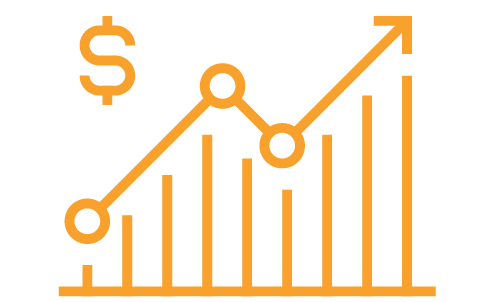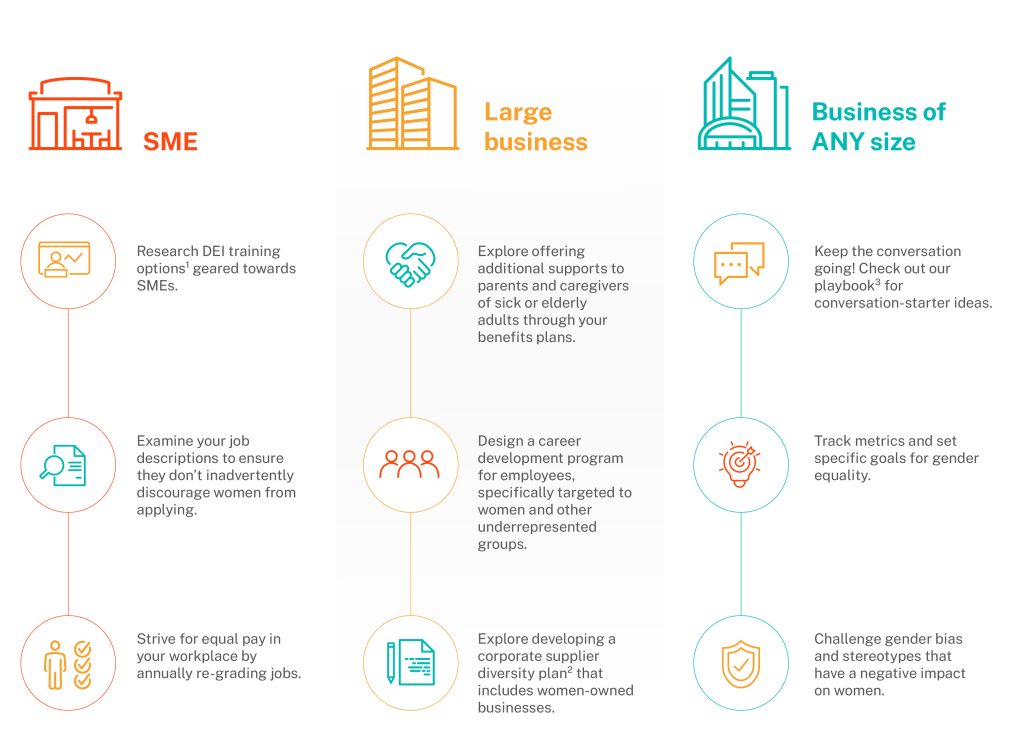Blog /
Policy Matters: Women & the Economy In Canada
Policy Matters: Women & the Economy In Canada
Canada’s long-term growth and prosperity requires maximizing every Canadian’s full participation in the economy.


Canada’s long-term growth and prosperity requires maximizing every Canadian’s full participation in the economy. Unfortunately, as it stands, Canada has a way to go in creating the right conditions for that to become a reality.
Women still face systemic barriers when it comes to equal access to economic opportunity – leaving $150 billion in incremental GDP on the table.

THE POLICY PROBLEM
Women typically bear the brunt of domestic responsibilities, including childcare and eldercare. This additional labour often strains their professional lives in a way that’s not necessarily experienced to the same degree by their male counterparts.
In business, women face barriers including microaggressions, burnout, pay inequity, discrimination, lack of professional development and growth, as well as a lack of mentors and allies.
And crucially, Canada continues to have a gendered economy where women are overrepresented in low-paying jobs and sectors and underrepresented in well paid jobs and high-growth, high-impact sectors of the economy.
The fact is, at every level of government – federal, provincial/territorial and municipal – every (yes, EVERY) policy and spending decision has the potential to either advance or hinder economic gender parity.

BUDGETS & BANDAIDS
In the 2023 federal budget, areas of focus included affordability, growing the green economy, public health and dental care – all policy areas with huge potential to address systemic barriers for women.
Unfortunately, the measures fell short.
One of the most highlighted items included the one-time “grocery rebate”. This measure had good intentions – benefit 11 million low and modest-income Canadians and families with a payment ranging from $234-$467 that could be spent to cover the cost of groceries (or anything else).
The problem? It’s a band aid solution. A one-time “groceries rebate” isn’t going to do much to meaningfully support women in the long run, trying their best to pay their bills or single mothers struggling to put food on the table and cover their children’s basic needs. Poverty is complex, multidimensional, and often intergenerational. A “one-time” rebate won’t cut it. It needed to be supported by longer-term measures as well.
Another example is the supports in the budget for the growth of the green economy – these aren’t likely to have any short- or medium-term clear benefits for Canadian women. The sectors at the receiving end of the federal government’s supports (electrification, clean energy and manufacturing, emissions reduction, critical minerals, infrastructure, electric vehicle and batteries, and major projects) have been male dominated for a long time.
So, what WOULD get to the root of the barriers facing Canadian women?

A SOLUTION
A long-term, comprehensive strategy that includes policy supports and investments in things like:
Childcare: ensuring all the pieces needed for the meaningful implementation of affordable childcare are in place. The federal government’s investment in a Canada-wide early learning and childcare system is a big step in the right direction, but it won’t mean much if there are no policy supports addressing issues of access, ensuring there are enough spaces to keep up with demand, a high quality of delivery and workforce planning and development, decent wages and training for staff…the list goes on.
Up-skilling & re-skilling: ensuring there are meaningful and targeted investments around re-skilling and up-skilling to support women and ensure they have access to the opportunities brought by the green and digital transitions.

WHAT’S NEXT?
While policy solutions are needed at the government level, we in the business community can’t just sit back and wait for change to come from the top down.
Gender parity isn’t a “women’s” issue – it’s an economic one, and the success and prosperity of our businesses and our economy depend on us acting now.
Here are just a few things you can do as a:

These are just a few options. Want to learn more? Check out the resources below and keep an eye on the work of our Council for Women’s Advocacy.
SNEAK PEEK
Our third annual Women in Business Summit will be taking place virtually Wednesday June 14, 2023.
From representation of women in high-growth sectors, leadership, entrepreneurship and traditionally “male-dominated” sectors, you won’t want to miss the policy discussions and action items coming out of this year’s event!
Registration opens on Wednesday May 10 – keep an eye on your inbox for our email!

RESOURCES
Tools
Websites
Reports
Government
Other Blogs

Navigating Net Zero

Lodestar Structures: Revolutionizing Community Infrastructure





